Reincarnation: Its Value and a Proof
Even though billions of people around the world believe in reincarnation, and the belief in reincarnation has existed for thousands of years, it remains a highly controversial subject. Personally, I believe that’s a good thing. We should examine our beliefs to determine whether they are based in reality rather than fantasy.
Most occultists, but definitely not all of them, accept reincarnation as a “given.” Aleister Crowley, for example, thought he was the reincarnation of famed French occultist Eliphas Levi. He also thought that in a life previous to that he had been Edward Kelly, the assistant to Dr. John Dee, discoverer of the system of Enochian magick. Why don’t more people accept reincarnation as a fact?
Pseudo-Science
The first problem is that a group of people who claim to be rational and “skeptical” actually have a deeply-held belief system I call “scientism.” This system is believed with the same passion as the follower of any fundamentalist religion, and they will defend this faith as best as they can. They will come up with concepts that are totally unscientific and falsely claim that their belief is representative of science.
One of the most popular of these pseudo-scientific beliefs is the idea that “extraordinary claims require extraordinary proof.” It was popularized by Carl Sagan and has become an accepted truth by the unscientific people who think they know science. I would fully grant that claims of something that isn’t currently accepted should require proof. But why should any claim require “extraordinary” proof? Either you can prove something is valid or you can’t. Period. So why do people want “extraordinary” proof? It’s because they have a predetermined belief system and most of them won’t ever challenge their belief system. They would rather use any trick possible to mock and block alternative beliefs than challenge their own limited thinking. By requiring more than just the proof of something, the chances of ever having to question their beliefs is eliminated. “Okay, you’ve proved that hairy little men exist in Borneo.* But can you prove they exist in Antarctica? Aha! I thought not. That proves they don’t exist at all.”
The concept that “extraordinary claims require extraordinary proof” is not about science.
It’s about defending a belief system.
At it’s core it is unscientific.
Those of you who have believed this in the past and are now sputtering in your coffee might now be asking how I could make this sacrilegious claim. My answer to you is found in the very expression itself. “Extraordinary claims” is an undefined expression. Who determines what claims are extraordinary? What makes a claim extraordinary? In the case of reincarnation, since billions of people believe it you could hardly say that the concept is extraordinary, but the pseudo-scientists do exactly that. It is extraordinary only in the sense that it doesn’t fit into their belief system.
Further, the expression “extraordinary proof” is also left undefined. This allows the pseudo-scientist to keep changing what is acceptable as extraordinary proof. Commonly called “moving the goal posts,” even if you prove something outside of the pseudo-scientist’s belief system, that person will come back and ask for more and more proofs until it is impossible to provide anything that would satisfy him or her. So proving reincarnation does not in any way require “extraordinary proof.” It just requires proof.
Real Science and the Kabalah
There is, however, a real scientific challenge for proving the validity of reincarnation. This is the challenge of repeatability. Testing for reincarnation can never be done in a laboratory. As a result, all examples provided to prove reincarnation are technically known as anecdotal, and many scientists won’t accept stories that imply reincarnation, no matter how many thousands of them are reported. To such scientists, reincarnation not only can never be proved as true or false, but see it as a belief and outside of the area of scientific study.
Another challenge is that pseudo-scientists tend to follow myths about reincarnation that fit into their own belief system. For example, they’ll ask, “Why does everyone who remembers a past life remember being someone famous, and only know about their past life what could be read in a history book?” I, personally, have helped several thousand people remember past lives using hypnotic past life regression. Not one has ever claimed to have been someone famous. Here, the facts get in the way of the pseudo-scientist. When I’ve met people claiming famous past lives it has always been a bolster to their vanity, ego, and need to feel self-important.
Another attack on reincarnation by pseudo-scientists is based on their own preconceptions. “Why don’t you know more about the time of your past life?” They have an idea of what you’re supposed to remember from your past life, and if you don’t remember it, that past life is a fake. This is called a “straw man” argument. They set up a false or “straw man” idea of what reincarnation should be, show that their fantasy doesn’t exist, and then denounce reincarnation as a fraud. In reality, it only proves that their straw man is a fraud.
The Kabalah easily explains the situation. As revealed in my Modern Magick, in the Kabalah we associate certain aspects of the mind to positions on the symbol called the Tree of Life:
 You will note from the diagram that the memory, associated with the fourth sephirah (second from the top on the right column) is mortal. It dissipates and vanishes with physical death. Any memories, therefore, must be important enough to somehow get attached to the immortal aspects of self. You don’t get everything, just what in some way is extremely valuable.
You will note from the diagram that the memory, associated with the fourth sephirah (second from the top on the right column) is mortal. It dissipates and vanishes with physical death. Any memories, therefore, must be important enough to somehow get attached to the immortal aspects of self. You don’t get everything, just what in some way is extremely valuable.
To me, that’s why reincarnation is so meaningful. Not because it proves you lived in a previous life. Rather, because there is some important information your mind is presenting to you in the form of aspects of a previous life. To me, it doesn’t matter whether past lives are objectively real. What does matter is that the experience of past lives is very real and that experience can help you in your life today.
The Greatest Proof of Reincarnation?
But the fact that the objective reality of reincarnation and past lives isn’t as important as the personal discovery possible through the subjective experience of past lives doesn’t stop the pseudo-scientist. Remember, they require the mythic, undefined, and constantly changing “extraordinary proof.” Although the following is anecdotal, it may be the greatest example proving the objective reality of reincarnation that has ever appeared. Here is the story of Shanti Devi.
Shanti Devi was born in 1926 in a town in India known as Chirawala Mohulla. She barely spoke until she was four. She then started claiming she was a different girl and wanted to see her husband and children. She said that her husband owned a cloth shop in the town of Mathura and she called herself Chaubine, meaning “Chaube’s wife.”
Initially, her parents thought this was just a child’s fantasy. But she kept repeating her story, often adding things such as describing the type of clothes she wore and foods she ate. She described her husband, including three features: he was light-skinned, had a mole on his left cheek, and wore reading glasses. She described his cloth shop’s location as being across from a temple. She described how she died during childbirth.
After two years of this, her parents were worried. Their family physician was astounded at her description of complex surgical procedures that had been done to her in her other previous life.
Shanti Devi kept insisting that she be taken to Mathura. She wouldn’t mention her husband’s name (among some people in India wives do not say they names of their husbands), but insisted that she would recognize him. Eventually, a distant relative said that if she told him the man’s name, he’d take her to Mathura. She whispered in his ear, “Pandit Kedarnath Chaube.” He wrote a letter to Chaube, definitely a real person, sharing what Shanti Devi had claimed. Chaube replied, claiming that what she had said was true and suggested that she meet with a relative of his living near Shanti Devi.
At the meeting, she accurately recognized the man none of them had ever met before as her supposed husband’s cousin. She described to him details about her home with her husband, even where she had secretly buried some money. She also said that if she was taken to the railway station in Mathura, she could find her way to her house.
The cousin brought Kedarnath, Shanti Devi’s supposed husband in a previous life, to meet her on November 12, 1935. She was just nine years old. Trying to fool her, the cousin described the man he had brought as “her husband’s older brother.” Shanti Devi said, “No, he is not my husband’s brother. He is my husband himself.” Indeed, he had a light complexion, a wart on his left cheek, and used reading glasses. She went on to describe their home and even her husband’s favorite foods.
So who was she in a previous life? It appears that she was a girl name Lugdi, born in 1902. Lugdi was married at age 10 (child brides were common at that time) to none other than Kedarnath Chaube. Her first child was stillborn. Her second, a son, was born through Cesarean section on September 25, 1925. Unfortunately, as was frequently the case of young women at that time, complications set in. Lugdi died nine days later. Shanti Devi was born a few months after Lugdi’s death.
Kedarnath, after speaking for some time with Shanti Devi, became convinced that she was the reincarnation of Lugdi. There were many things she told him that only Lugdi could have known.
The story of Shanti Devi spread like wildfire all over India. Mahatma Gandhi became interested. He set up a committee of fifteen people, including national leaders, members of parliament, and members of the media. They finally took her to Mathura. She immediately recognized the real older brother of her supposed husband even though they had never met in this life. She gave directions to where she supposedly lived. As they drove, she described the way things had been when she had lived there, noting all of the changes. She was correct.
As they neared her supposed home she saw a man in the crowd and recognized him as her father-in-law. Again, she was correct. When they got to the house she immediately went to her bedroom. She told them where the bathroom was. She even correctly described the meaning of little “pet words” they had for certain foods.
But this wasn’t the only house she and her husband had lived at. She guided them to the previous home. She was confused, however because she remembered a well. It turned out to be hidden under a stone. She led them to the second floor and to the spot where she had hidden money. However, there was no money there. Kedarnath admitted that he had found and removed it after Lugdi died.
There are many other things that Shanti Devi remembered from her previous life, but that would take a book to describe. A critic of the story, a Swedish journalist named Sture Lönnerstrand, came from Sweden to expose her. He ended up writing, “This is the only fully explained and proven case of reincarnation there has been.” He ended up writing a book called I Have Lived Before.
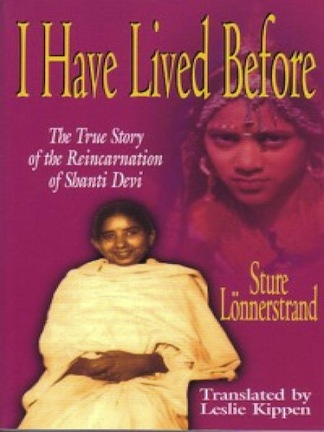 Dr. Ian Stevenson (1918–2007), a professor of psychiatry at the University of Virginia and one of the foremost experts on reincarnation (he thought that reincarnation should combine with genetics and environment to help medical practice), stated that she made “at least 24 statements of her memories that matched the verified facts.”
Dr. Ian Stevenson (1918–2007), a professor of psychiatry at the University of Virginia and one of the foremost experts on reincarnation (he thought that reincarnation should combine with genetics and environment to help medical practice), stated that she made “at least 24 statements of her memories that matched the verified facts.”
While I have heard of other cases that are indicative of the objective reality of reincarnation, I know of none more complete than this. Still, I don’t worry about whether reincarnation is an objective fact. More important is what the experience of past lives can do for a person today.
Some Books to Help
If you’re interested in learning more about past lives—both the potential of their objective reality and the value of the past life experience—here are some books that can assist you:
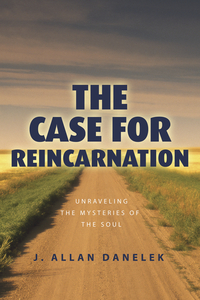 In The Case for Reincarnation, J. Allan Danelek presents an overview and all sides of the phenomenon. This is perhaps the most fair and objective analysis of past lives currently available. It’s a great book for people who are scientifically-minded or beginning to explore reincarnation.
In The Case for Reincarnation, J. Allan Danelek presents an overview and all sides of the phenomenon. This is perhaps the most fair and objective analysis of past lives currently available. It’s a great book for people who are scientifically-minded or beginning to explore reincarnation.
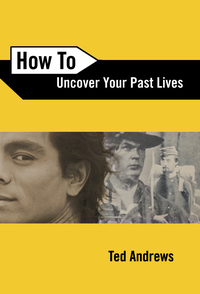 The late Ted Andrews, one of the most popular Llewellyn authors, wrote How to Uncover Your Past Lives. In this practical book Ted describes a variety of ways to have past life experiences. More importantly, in my opinion, he reveals how to make changes in your life using these techniques. Danelek’s book is great for people looking for information about past lives. Andrew’s book is excellent for people who want to learn about and use their own past lives.
The late Ted Andrews, one of the most popular Llewellyn authors, wrote How to Uncover Your Past Lives. In this practical book Ted describes a variety of ways to have past life experiences. More importantly, in my opinion, he reveals how to make changes in your life using these techniques. Danelek’s book is great for people looking for information about past lives. Andrew’s book is excellent for people who want to learn about and use their own past lives.
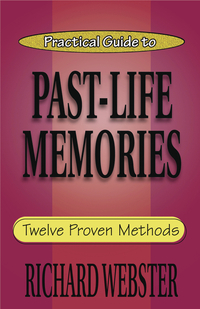 One of the challenges of having past life experiences is that techniques which will help one person have such experiences aren’t effective for other people. The more methods you know, the better. Andrew’s book provides several methods. Richard Webster’s Practical Guide to Past-Life Memories gives twelve more approaches. These two books are a great combination for people seeking expertise in this area.
One of the challenges of having past life experiences is that techniques which will help one person have such experiences aren’t effective for other people. The more methods you know, the better. Andrew’s book provides several methods. Richard Webster’s Practical Guide to Past-Life Memories gives twelve more approaches. These two books are a great combination for people seeking expertise in this area.
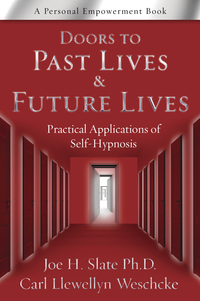 Finally, Joe H. Slate and Carl Llewellyn Weschcke added a new wrinkle to this study. In Doors to Past Lives & Future Lives they show how to use self-hypnosis to experience both past lives and potential future lives. This way you can take what you learn from the past life experience and program it into your future, a very magickal way of discovering what you really need, making it an achievable goal, and using all of your resources to make it a reality. By the way, I also introduce the concept of working with your future in the 12th lesson of the current 3rd edition of Modern Magick.
Finally, Joe H. Slate and Carl Llewellyn Weschcke added a new wrinkle to this study. In Doors to Past Lives & Future Lives they show how to use self-hypnosis to experience both past lives and potential future lives. This way you can take what you learn from the past life experience and program it into your future, a very magickal way of discovering what you really need, making it an achievable goal, and using all of your resources to make it a reality. By the way, I also introduce the concept of working with your future in the 12th lesson of the current 3rd edition of Modern Magick.
*When early explorers in Borneo reported finding tribes of small, hairy “men,” many of the scientists of the day mocked them and said they didn’t exist. Eventually, one of these creatures, now called an “orangutan,” was produced, much to the dismay of the skeptics of the time.







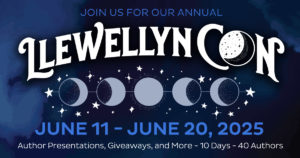
Great article Don.
There is an interesting article on reincarnation by a young Israel Regardie at:
http://societas-rosicruciana-in-america.blogspot.com/2012/04/reincarnation-by-israel-regardie.html
My comment is about extraordinary claims and extraordinary proofs. I am a mathematician (you know those who believe themselves superior to all other soft disciplines). Of course, in all areas of life people build models to fit their perceptions, views or hopes in life. This happens in religion, politics, science, every where. If a model is good, it will grow with questions and answers. If an alternate model is suggested which is far from the mainstream, it might be considered an extraordinary claim. For instance, if Einstein’s General Theory of Relativity was offered in the 16th century it would be an extraordinary claim (especially if the proposer was allowed to live). However, such a claim must hold for the theories already in existence as well and extend them to new situations. The proof that the model is valid, in the 16th century, would require an extraordinary proof. The proof would be extraordinary because at the time there is nothing ordinary about the equipment required, the observation made and especially the mathematics required.
I suggest that if a claim is sufficiently extraordinary and extraordinary proof is required.
Thank you for your comment, Doug, but I must respectfully disagree. All that was needed was evidence to proofe Einstein’s theory was true. For example, it’s fairly well known that the General Theory of Relativity predicted that light would curve around a star. No “extraordinary” proof of this was needed, just proof. Eventually, some people figured out how to do this and saw that the position of a star (or more accurately, the light from that star) was different than where it should have been when it was behind (in relation to Earth) another star. There was nothing extraordinary, here. It’s just proof.
The claim that there are “Little Green Men” living on Mars is extraordinary. I wouldn’t need to have 50,000 people personally meet these men—an extraordinary amount of proof. Nor would I need to dissect the Martians to show why they were green—an extraordinary type of proof. I’d just have to show that they were there.
No matter how extraordinary a claim is, all that is needed to validate it is proof. Personally, I’d like to know how those Little Green Men could exist on Mars without Little Green Women!
Of course evidence is not proof of fact. Evidence supports the likelihood of truth. The more evidence the more likely true. Newton’s Laws were supported by evidence, however, the evidence did not prove his assertions (since they were wrong). Likewise, evidence cannot be considered proof of Einstein’s claims either only that they fit the observable facts. The only real proofs occur in mathematics in the form of if-then statements.
I concede that extraordinary claims do not require extraordinary proofs and that a boring proof would do. However, mathematicians described Einstein’s relativity mathematics as remarkable — a synonym for extraordinary.
I enjoyed your article. Your assertion “To such scientists, reincarnation not only can never be proved as true or false” actually to a mathematician applies to all assertions from science. All they can do is verify that something is likely true. Anecdotal evidence can very well speak to the likelihood that reincarnation exists.
Thank you again, Doug. I love that this has moved from physical science to what can be called the “pure” science of mathematics. You’re correct in that theories can only present a way to understand the given observations. In pure math, the you can get to some of the few things that can be called truth. When I was at UCLA I studied the philosophical branch known as formal logic. To those unfamiliar with this, it converts natural language (such as English) into a set of mathematical symbols. Then it uses a set of mathematic-like rules to work with the symbols and determine whether a conclusion was true, false, or unproven. If we take “remarkable” to mean “extraordinary” in this discussion, then I would agree that a remarkable claim can be proven by a similarly remarkable proof. However I would prefer an “elegant” proof which is often clean and concise rather than drawn out. Unfortunately, the pseudo-scientists I described—and I sincerely would NOT count you among those—will often use the expression “extraordinary proof” to mean “beyond regular proof.”
DMK writes: “The claim that there are “Little Green Men” living on Mars is extraordinary. I wouldn’t need to have 50,000 people personally meet these men—an extraordinary amount of proof. Nor would I need to dissect the Martians to show why they were green—an extraordinary type of proof. I’d just have to show that they were there.”
I think you’re misunderstanding. No one said anything about “extraordinary *amount* of evidence.”
What skeptics demand is evidence that is as extraordinary as the claim. In the example you give, showing people the little green men – for example, capturing one and putting him in a cage for anyone to examine – would absolutely be extraordinary and sufficient to verify the claim.
What *wouldn’t* be extraordinary – and thus what would not constitute sufficient evidence at all – is a handful of stories from people about how they had seen little green men flying around. A group of deluded nutballs is not at all extraordinary and not sufficient to support this claim.
It’s the same with reincarnation: no matter how many anecdotes one can collect, it doesn’t come anywhere close to demonstrating that the claim is true.
Thank you for your comment, however I must respectfully disagree. The consistent problem with supporting the claim that “extraordinary claims require extraordinary proof” is the continued unwillingness to define “extraordinary.” In my response I described extraordinary quality and quantity. The pseudo-scientist won’t clearly define what “extraordinary” means. Further, they won’t describe, in advance, who determines what is extraordinary? You? Me? Some committee?
Without a definition of what is meant by “extraordinary” and how it is used, the entire expression is meaningless. If I said, “I have a cat” and showed it to you so you could examine it, that wouldn’t be extraordinary. It would just be proof. And yet, with the example of little green men the exact same evidence is described as extraordinary.
I agree with you that claims from “a group of deluded nutballs” would not prove the existence of UFOs. However, what about the eyewitness reports from thousands of trained observers up to and including professional airline pilots and astronauts? “No,” the pseudo-scientists claim, “that’s not extraordinary enough.”
And that’s the trick the pseudo-scientists, pseudo-skeptics, and debunkers continue to play. They sound reasonable when they are not. They don’t define “extraordinary” and can always say, “That’s not extraordinary enough.” As I wrote above, they can keep moving the goalposts.
As you wrote, “no matter how many anecdotes one can collect, it doesn’t come anywhere close to demonstrating that the claim is true.” Really? If I collected ten million anecdotes as documented as the case of Shanti Devi that wouldn’t prove anything? To the pseudo-scientist, the answer is, “No, it wouldn’t.” The massive collection of evidence wouldn’t be extraordinary enough.
On the other hand, real scientists would say that ten million verified anecdotes would certainly be indicative of something that needed further investigation. Why wouldn’t the pseudo-scientist even consider it? Because in these matters they’re not practicing real scientific methods. They have a predetermined belief and will defend it as strongly as any fundamentalist religionist will defend his or her religion.
You write: “The consistent problem with supporting the claim that “extraordinary claims require extraordinary proof” is the continued unwillingness to define “extraordinary.””
I think you’re missing the point.
Skeptics are people who do not accept claims until there is sufficient evidence. While it would be great to be able to exhaustively explore the evidence for every claim, this just isn’t feasible in daily life. Each one of us has developed a heuristic to analyze claims on the fly. For claims that we each — individually — consider “ordinary,” we don’t usually insist on exhaustively examining the evidence and tend to just accept these claims on someone’s say-so for the purpose of argument.
So, if you told me a claim that I consider ordinary (such as “I got a cat today”), I would be inclined to just accept it (unless I had a compelling reason to doubt you). Now sure, maybe there are some (weird) people who would consider that “extraordinary,” and if they wanted to press you on it, you could certainly produce evidence just as “extraordinary” as that claim (i.e. produce the cat).
But if you confront me with a claim that I find extraordinary (such as “I bought a flying car today”), I wouldn’t be willing to accept it without evidence that is as extraordinary as the claim (i.e. showing me the car and taking me for a flying ride).
The point is that claims need evidence that is adequately matched to the claim. The sole point of introducing the “extraordinary” distinction is to indicate those claims that people are going to be sure to *insist* on seeing the adequate evidence. Whether some people in some cases define “extraordinary” slightly differently is irrelevant: most people aren’t going to accept claims that they consider extraordinary merely on someone’s say-so, in the way that they’d likely be willing to accept claims that they consider ordinary.
You write: “As you wrote, “no matter how many anecdotes one can collect, it doesn’t come anywhere close to demonstrating that the claim is true.” Really? If I collected ten million anecdotes as documented as the case of Shanti Devi that wouldn’t prove anything?”
Ten million anecdotes could tell us only that *something* is happening, but the anecdotes themselves cannot verify the claim of reincarnation.
At the most — at the very, very most — a large number of anecdotes like these could testify to the existence of shared memories, but they wouldn’t tell us anything at all about *how* this is happening.
“Reincarnation” wouldn’t be, a priori, any more likely an explanation than that some people are capable of tapping into a spiritual database of memories (like the Akashic records) or that memories can leave the body after death and get picked up by other people somehow or that we’re all living in a big computer program and that these “memories” are actually glitches or that they are pranks being played on humans by interdimensional pixies.
You can’t verify claims like “reincarnation is real” merely on someone’s say-so.
You’re absolutely correct in saying that “Skeptics are people who do not accept claims until there is sufficient evidence.” That’s what real skeptics do. Unfortunately the pseudo-scientists and pseudo-skeptics do not follow this practice. Instead, they have made up their minds, in advance, as to what is okay to believe, and they do not accept claims that challenge their beliefs. Real skeptics are neutral. Pseudo-skeptics are not.
Again, you present an argument that seems scientific, but is not. Real scientists do not simply agree to what is accepted (even by other scientists). They question. They challenge. They’re skeptical of all sides and, from what I’ve seen, they’re especially skeptical of merely accepting what others believe to be true. When it comes to belief in any side they are agnostic until evidence–not “extraordinary” evidence, just evidence–gives proof of something. And, true to real skepticism, they will only hold to that belief until a more elegant, cohesive, and explanatory theory supersedes it.
Do you realize how silly it is to say that showing a cat is “extraordinary” evidence? This is exactly what I mean when I have written about “moving the goalposts.” Without a consistent definition of “extraordinary” the word is meaningless and people can change the definition to fit their need to support their predetermined philosophy. “Sure, that’s A cat, but how do I know it’s THE cat you were talking about?” The goalposts simply keep moving farther and father until anything can be disproved.
You wrote, “The point is that claims need evidence that is adequately matched to the claim.” That is identical in meaning to what I wrote in saying that no claim requires “extraordinary” evidence, it just requires evidence.” The problem is that “extraordinary” becomes a “weasel word,” a word used so that no matter what happens, you can always say the other person is wrong: their evidence isn’t “extraordinary enough.”
I note that you’re trying to excise the word “extraordinary” and replace it with “adequate.” Unfortunately, you really haven’t resolved our differences. Who determines what is “adequate?” You? Me? The judges on Dancing with the Stars?
You state that a large number of verified anecdotes implying reincarnation “at the most…testify to the existence of shared memories” and that “we’re all living in a big computer program.” Really? Do you really want to present that as the solution to anecdotes of past life memories? You see, I’m a skeptic; a real skeptic. I could come up with at least five other theories that would explain all of the data. Which one is accurate? I don’t know. I don’t claim to know. You have already chosen one and frankly, you’ve done so without much evidence. I prefer to take a truly skeptical view and say that so far, I don’t have a solution that deserves to be universally accepted..
Respectfully, in your zeal to denounce what you seemingly don’t believe in, you have ignored what I wrote. I stated in my original post why I believe the experience of past life memories are “meaningful. Not because it proves you lived in a previous life. Rather, because there is some important information your mind is presenting to you in the form of aspects of a previous life. To me, it doesn’t matter whether past lives are objectively real. What does matter is that the experience of past lives is very real and that experience can help you in your life today.” Are you really disagreeing with that?
Sorry if I started an obsession concerning extraordinary. I think the point is that an good investigator, in what ever field of expertise, will listen to anecdotal evidence and say, “This warrants further investigation”. Your claim is correct. Something causes the phenomenon of unexplained memories and until further investigation takes place, all we have is evidence of unexplained memories. Of course, we all will create a model to encompass the observations. However, this must not be done too soon since our own fantasies will influence our construct. A responsible investigator will wait until something, not predetermined, will present an intuitive solution. Meanwhile of course, one considers the “simplest” explanation and makes it more elaborate as contradictions present themselves. As you point out, there are many models which apply but not suffice. Certainly a hypothesis which is not true would require an extraordinary proof since a proof does not create truth but substantiates it. With consistent effort by the proper people, it may happen, that as techniques are devised, a scientific inquiry can take place, but until then, we should just listen and wait. Perhaps we are focusing on the word extraordinary too much. A proof, when completed, is simply a proof and its presentation, at least in the mathematical world, will show no evidence of the labour required to yield it. (It all must appear effortless you know). However, it is not the proof which is extraordinary. It might very well be the effort put into the proof (which we never see) which is extraordinary. The trouble with making claims too far past the observations is that the model can become vast. If reincarnation or rebirth as Buddha would call it, is the model used, there are very many deep and important questions which must be asked and answered. It is much like creating a world from scratch.
I have done lot of head scratching and have read many books on reincarnation. Reincarnation is purely a Paranormal matter, since the issue of Soul, spirit is involved. But as per my view, I think, man keeps coming to Earth Plane, repeatedly, until he is hoping for Liberation, to fulfill his unfulfilled Desires, Ambitions etc.,The authenticity of the following confirms my notion of reincarnation(rebirth) since reincarnation is a latin word, means re incarnation(coming into flesh again)
1.Inside this physical body made of many atoms,cells,neurons etc., there is a Spirit made up of light which is to be proved by science and now called as Bio-plasmic body (subtle body).
2.Inside this subtle body there is Soul, just a spark of light which is also called as Causal body.
3.These bodies are made up of light and can travel at the speed of light.
4.The consciousness which consists of mind,brain,neurons etc.,cannot be explored by science as has already told by many Nobel Scientists.
5.The memories of this life get vanished, when this Physical Brain gets dissolved after death, but are recorded in the Astral/subtle body or Unconscious Mind, which is told already by Dr.Carl Jung who has made lot of research in the field of Unconsciousness.
Some cases dealt in detail by Dr.Ivan Stevenson, Dr.Satwant Pasricha of NIMHANS, Blore, etc.,etc., are best examples, but science has to explore a great deal in this field, since “extraordinary beliefs require extraordinary proof”.
Let us Pray God to give life for those who wish to come to this always troubled Earth Plane as per Cosmic law.
//rm agadi//